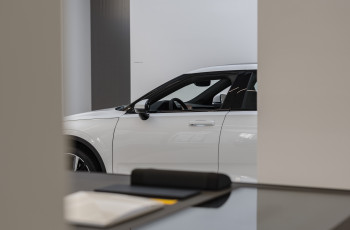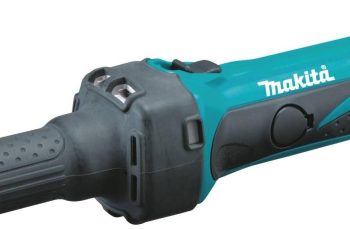In this informative article, you will explore the topic of die grinder noise levels. Discover how these noise levels can impact your work environment and how to effectively manage them. Understanding the potential risks associated with excessive noise is crucial, whether you’re a professional using a die grinder or simply someone interested in the subject. Get ready to gain valuable insights into this important aspect of workplace safety.
Definition of Die Grinder
Description
A die grinder is a handheld power tool used for grinding, sanding, honing, and polishing various materials such as metal, wood, and even plastic. It typically features a small, rotary abrasive wheel or burr that spins at high speeds to remove material or shape surfaces. Die grinders are commonly used in construction, metalworking, automotive, and manufacturing industries due to their versatility and ease of use.
Uses
Die grinders are widely used in various applications. They are frequently employed for deburring and shaping metal parts, such as removing sharp edges or excess material from welds. In automotive workshops and garages, die grinders come in handy for grinding or polishing metal surfaces, preparing them for painting or finishing. Woodworkers often use die grinders for carving intricate shapes or smoothing rough edges on wooden pieces. Additionally, die grinders are also utilized in the aerospace and jewelry industries for intricate detailing and precision work.
Features
Die grinders come with a variety of features that enhance their performance and usability. These may include adjustable speed control, ergonomic designs for comfortable handling, quick-change tooling systems for easy bit changes, and integrated exhaust systems to direct air away from the operator. Some models even offer variable-speed options and built-in LED lighting for better visibility in low-light conditions. With the advancement of technology, cordless die grinders with rechargeable batteries have also become available, providing more mobility and flexibility.
Importance of Noise Levels in Die Grinders
Occupational Safety and Health
One of the primary reasons why noise levels in die grinders are important is the concern for occupational safety and health. Prolonged exposure to high levels of noise in the workplace can lead to various health issues, including hearing loss, stress, reduced productivity, and increased risk of accidents. It is crucial to ensure that the noise generated by die grinders is within permissible levels to protect the well-being of workers.
Noise-Induced Hearing Loss
Noise-induced hearing loss (NIHL) is a significant concern associated with excessive noise levels in die grinders. The continuous exposure to loud noise can damage the sensitive structures of the inner ear, leading to irreversible hearing loss. The effects of NIHL can be gradual and often go unnoticed until it reaches an advanced stage. Therefore, it is essential to minimize noise levels in die grinders to prevent long-term hearing damage.
Legal Regulations
There are legal regulations and standards in place to address the issue of noise levels in various industries, including die grinder usage. Regulatory bodies such as the Occupational Safety and Health Administration (OSHA) in the United States, the European Union (EU) directives, and the International Electrotechnical Commission (IEC) have established guidelines on permissible noise exposure levels and requirements for manufacturers to comply with. It is crucial for businesses and manufacturers to adhere to these regulations to ensure a safe and healthy working environment.

Factors Affecting Die Grinder Noise Levels
Power Source
The type of power source used in a die grinder can significantly impact the noise levels generated. Electric die grinders tend to produce less noise compared to their air-powered counterparts. This is because electric motors are generally quieter and more efficient. On the other hand, pneumatic die grinders can be noisier due to the air compression and release mechanisms involved.
Motor Speed
The speed at which the motor spins in a die grinder directly affects the noise levels. Higher motor speeds typically result in louder operation. Therefore, selecting a die grinder with adjustable speed control can allow users to regulate the motor speed according to the task at hand, potentially reducing noise levels.
Quality of Components
The quality of components used in a die grinder can play a role in determining its noise levels. Higher-quality materials and precision engineering can result in smoother operation and reduced vibrations, ultimately leading to lower noise output. When choosing a die grinder, it is important to consider models from reputable manufacturers that prioritize the quality of their products.
Accessories Used
The accessories and attachments used with a die grinder can also influence the noise levels. For instance, abrasive wheels, burrs, or grinding discs with a rough surface or unevenly distributed weight may cause vibrations and result in louder operation. Opting for high-quality accessories specifically designed for low-noise operation can help reduce noise levels during grinding or sanding tasks.
Determining Noise Levels in Die Grinders
Decibel Ratings
Noise levels are typically measured in decibels (dB). Decibels are logarithmic and provide an indication of the intensity or power of sound. A higher decibel rating corresponds to a louder sound. In the case of die grinders, the noise level is usually specified by the manufacturer and can be found in the product specifications or documentation.
Sound Pressure Level
Sound pressure level (SPL) is another metric used to quantify the intensity of sound. It measures the pressure variation caused by a sound wave and is usually expressed in dB. SPL is an important parameter to consider when evaluating the potential impact of noise on human hearing. It is recommended to choose die grinders with lower SPL values to minimize the risk of hearing damage.
Measurement Techniques
To determine the noise levels of a die grinder, various measurement techniques can be employed. These may include using sound level meters or noise dosimeters. Sound level meters are portable devices that measure the sound pressure level in real-time, providing instantaneous readings. Noise dosimeters, on the other hand, are worn by the operator to measure and record noise exposure levels over a specified period, allowing for more accurate assessment of long-term exposure.

Common Noise Levels in Die Grinders
Average Noise Levels
The noise levels produced by die grinders can vary depending on several factors, such as power source, motor speed, and overall build quality. On average, die grinders produce noise levels ranging from 70 to 90 dB. However, it is important to note that these values are approximate and can vary between different models and manufacturers.
Comparison with Other Tools
In comparison to other power tools, die grinders generally fall within a moderate noise level range. They are typically quieter than larger power tools like angle grinders or circular saws, which can generate noise levels exceeding 100 dB. However, they may still be louder than certain handheld tools like drills or sanders. It is important to consider the specific noise level requirements of your task or workplace when selecting a die grinder.
Variations based on Models
The noise levels of die grinders can also vary based on the specific model and brand. Some manufacturers prioritize noise reduction in their designs, resulting in quieter operation compared to others. When choosing a die grinder, it is advisable to explore product specifications and user reviews to get a better understanding of the noise levels associated with a particular model.
Reducing Die Grinder Noise Levels
Proper Maintenance
Regular and proper maintenance of die grinders can help minimize noise levels. Ensuring that the tool is clean, lubricated, and free from debris or worn-out parts can promote smoother and quieter operation. Following the manufacturer’s maintenance guidelines, such as regular oiling of air-powered die grinders or replacing worn-out parts, can contribute to noise reduction.
Noise Dampening Techniques
There are several noise dampening techniques that can be employed to reduce the noise levels of a die grinder. Applying vibration-dampening materials to the tool, such as rubber or foam, can minimize vibrations and consequently decrease noise output. Additionally, using anti-vibration gloves or mats can absorb some of the vibrations, making the tool quieter during operation.
Personal Protective Equipment
While efforts should be made to reduce noise levels at the source, it is essential for operators to wear appropriate personal protective equipment (PPE) to further safeguard their hearing. This includes wearing earmuffs or earplugs specifically designed to attenuate noise. PPE should be worn consistently, especially in environments where noise levels cannot be reduced to acceptable levels.

Selecting a Quieter Die Grinder
Brands with Low Noise Levels
Certain brands have established a reputation for prioritizing noise reduction in their die grinder designs. These manufacturers invest in research and development to produce quieter tools without compromising performance. When looking for a quieter die grinder, it is advisable to consider reputable brands known for their commitment to reducing noise levels.
Product Features to Look for
There are specific product features that can indicate a quieter die grinder. Look for models that explicitly state noise reduction as a design feature. Adjustable speed control can also be useful in lowering noise levels as slower speed settings often result in reduced noise output. Additionally, die grinders with built-in noise dampening mechanisms or insulated housings can minimize noise transmission.
User Reviews and Ratings
User reviews and ratings can provide valuable insights into the noise levels generated by specific die grinder models. Reading experiences shared by other users, especially those who have used the tool in similar working environments, can help gauge the practical noise levels and performance of a particular die grinder. Utilize online platforms or industry forums to access user feedback and make informed purchase decisions.
Regulatory Standards for Die Grinder Noise Levels
Occupational Safety and Health Administration (OSHA) Standards
In the United States, the Occupational Safety and Health Administration (OSHA) has established regulations to protect workers from excessive noise exposure. OSHA sets permissible exposure limits (PELs) for noise and requires employers to implement hearing conservation programs when noise levels exceed these limits. Employers are responsible for conducting noise assessments and providing suitable hearing protection to workers when needed.
European Union (EU) Directives
The European Union (EU) directives address occupational noise exposure and provide guidelines to protect workers’ hearing. The EU Noise Directive sets exposure limits and requires employers to assess and reduce noise levels when they exceed designated thresholds. Furthermore, the directive also emphasizes the implementation of engineering controls, like the use of quieter machinery, as the primary method of noise reduction.
International Electrotechnical Commission (IEC) Standards
The International Electrotechnical Commission (IEC) has developed standards for noise emissions by equipment and machinery, including die grinders. These standards specify methods for measuring noise levels and provide limits to ensure manufacturers adhere to acceptable noise emission levels. Compliance with IEC standards ensures that die grinders meet internationally recognized guidelines for noise control.
Best Practices for Managing Die Grinder Noise Levels
Employee Training and Awareness
Raising employee awareness about the risks associated with excessive noise exposure and providing appropriate training on the use of die grinders can contribute to noise reduction. Training should include information on the importance of hearing protection, proper tool handling techniques, and the selection of suitable accessories and attachments that minimize noise generation.
Regular Noise Level Assessment
Regular noise level assessments should be conducted in workplaces where die grinders are used. These assessments can help identify areas or tasks with high noise levels, allowing for targeted noise reduction measures. It is essential to monitor noise levels regularly to track changes and ensure compliance with legal regulations and internal noise control policies.
Workplace Noise Mitigation Measures
Implementing noise mitigation measures in the workplace can significantly reduce noise levels generated by die grinders. Engineering controls, such as the use of acoustic enclosures or barriers around noisy equipment, can minimize noise propagation and protect workers in adjacent areas. Additionally, optimizing workplace layouts to separate noise-generating areas from quieter workspaces can further mitigate noise exposure.
Conclusion and Future Outlook
Summary of Key Findings
Die grinder noise levels play a significant role in ensuring the occupational safety and health of workers. Excessive noise can lead to permanent hearing damage, stress, and reduced productivity. Proper maintenance, noise dampening techniques, and the use of personal protective equipment can help reduce noise levels. Choosing quieter die grinder models from reputable brands is advisable, and compliance with regulatory standards is essential.
Emerging Technologies for Quieter Die Grinders
As technological advancements continue, the future outlook for quieter die grinders is promising. Manufacturers are investing in research and development to create tools with lower noise emissions without compromising performance. Ongoing innovation aims to incorporate noise reduction technologies such as active noise cancellation, improved vibration isolation, and enhanced insulation to provide operators with quieter and safer working environments.



